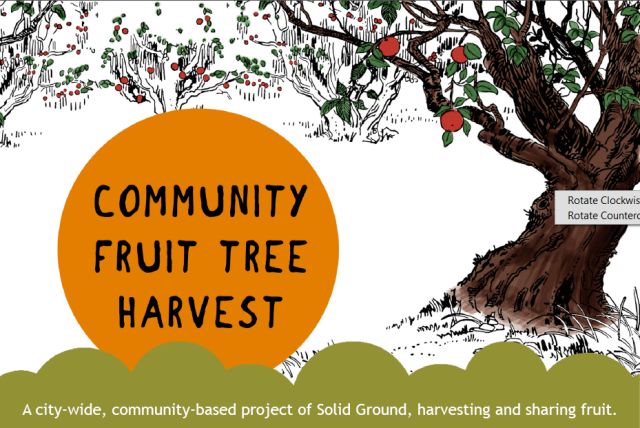Marketing and Visibility
Community Fruit Tree Harvest (CFTH)
The best way of recruiting donors and volunteers for Lettuce Link is word of mouth. CFTH produces quartersheet flyers that people can easily give to neighbors and friends who are interested in participating in the project. In addition, the season kick-off and closing events are held in neighborhood restaurants and community centers to further increase publicity and partnership with local organizations.
Aside from flyering local businesses, community centers, and door-to-door, Community Fruit Tree Harvest has partnered with other organizations to increase visibility of the project. City Fruit is another non-profit in Seattle that focuses on fruit tree stewardship, care, and harvesting. CFTH has collaborated and partnered with them on outreach materials and events. The Garden Hotline, managed by Seattle Tilth, has also done outreach on behalf of CFTH during their tabling events. CFTH also organizes group harvests from different organizations, companies and non-profits.
Another method of building awareness about CFTH is to tell a story. CFTH volunteers were filmed and interviewed about why they participated in the harvest program. Questions asked include: What motivated them to sign up? What keeps them interested year after year? What was their favorite fruit harvesting memory growing up? This is a great way to connect on a personal level to volunteers and show the importance and impact of the project.
Growing and Giving
The P-Patch garden network has been a vital tool in manifesting the concept of Growing and Giving. Before the growing season even begins, Lettuce Link emails all Giving Gardens, especially new ones (or potential new ones) to offer supplies such as seeds, starts, fertilizer, row markers, scales, and even compost. Lettuce Link connects new Giving Gardeners with experienced Gardeners to help build community and increase knowledge of best practices. Moreover, two informal get-togethers are held in late spring and early fall to create a time for gardeners to get to know each other and exchange information.

